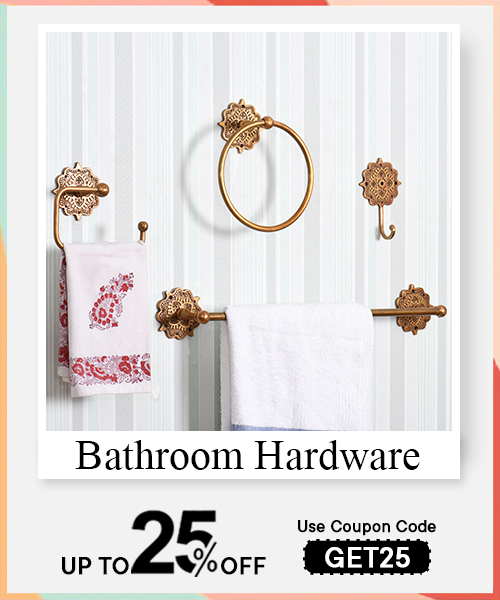Vastu Shastra connects physical spaces with emotional energy, and in doing so, it treats paintings not just as décor, but as transmitters of frequency. A painting isn't just a piece on the wall, it's a story in motion. When you align that story with the laws of space and direction, you're inviting harmony. Through the lens of Vastu, art becomes a tool that nurtures the soul and stabilizes the unseen pulse of a home. It’s not superstition, but sensibility. Colors, subjects, and positioning—all conspire silently to uplift, soothe, or disturb. So, choosing art becomes an act of emotional architecture.
Paintings, within the Vastu framework, are not mere decor—they are conduits of energy. Their colors, themes, and placements subtly influence the emotional and psychological currents of a space. A painting of flowing water in the north brings abundance, while a rising sun in the east invokes new beginnings. Violent or sorrowful imagery, however artistically profound, may disturb the room’s equilibrium. The visual texture and subject matter silently speak to the subconscious, either harmonizing with or resisting the natural prana. When chosen with awareness, art becomes an active participant in the home’s energy flow—an unseen force shaping experience and intention.
Vastu considers paintings as energy carriers that guide this breath. An image of a blooming lotus in the northeast can elevate positivity, just as a scene of chaos can clutter the mind when wrongly placed. Paintings speak to our subconscious; they evoke, they settle, they ripple. The imagery, colors, and orientation either support the natural energy pathways or block them. When aligned properly, they ease the flow of prana, creating an internal atmosphere that mirrors outer peace. A painting, in this context, is not inert. It’s alive. Its presence rearranges the room’s emotional and energetic script.
Read More : Shekhawati: Land of Legacy and Frescoes
A home is more than walls and windows; it's a space that breathes with us. In Vastu Shastra, even a painting is not mere décor—it’s an energy map, a symbol that either uplifts or disturbs the subtle balance of a room. When chosen and placed mindfully, paintings can shape moods, invite abundance, and echo harmony. Each room carries its own function, emotion, and rhythm—and Vastu aligns visuals with these undercurrents. This guide explores room-wise Vastu guidelines for painting placements, helping you create not just beautiful interiors, but spaces that nurture, support, and resonate with the life you seek to build.
Yes, Vastu treats every room like a different energy chamber with a distinct function. Art enhances or disrupts depending on how it resonates with that room’s purpose. The living room, facing east or north, benefits from peaceful landscapes or social scenes. The bedroom, a space of rest, should avoid depictions of aggression or solitude. The kitchen, being a source of nourishment, flourishes with paintings of fruits or golden fields. Each direction corresponds to elements—water, fire, earth, air—and art must honour this. So, guidelines don’t restrict creativity; they refine it into a harmonious visual-energetic flow throughout the home.
The living room is the home’s heart—a space where energies intermingle. Vastu recommends paintings that reflect harmony, prosperity, and openness. Think calming nature scenes, blossoming flowers, vibrant yet balanced abstract art, or even portraits that exude joy. Horses in motion—especially seven white horses—are symbols of success and are highly favoured. The goal is to welcome guests with warmth and positivity, to invite cheer without overstimulation. Avoid anything overly dark, melancholic, or lonely. This space thrives on balance—a place where art encourages conversation, connection, and calm, without demanding too much of the viewer’s emotional bandwidth.
The bedroom is more than just a space where the day ends—it’s where the self begins to unfold quietly. When the lights dim and silence settles, what surrounds us starts to speak more clearly. The walls, the corners, the ceiling fan’s slow whisper—all of it becomes part of a larger rhythm. And within this rhythm, a painting isn't just a frame on the wall; it's a companion to your breath, a mirror to your state of being, and sometimes, a soft resistance against the chaos outside.
Choosing art for a bedroom is not about impressing. It’s about allowing. Allowing softness. Allowing pause. Paintings with calm landscapes, gentle water bodies, or slowly unfurling skies help anchor the emotional temperature of the room. They don’t ask you to look at them. They’re simply there when you need them. Like a memory you haven’t fully processed. Like a dream you haven’t fully woken up from.
Then there are those abstract pieces—open, unresolved, shifting in meaning each time you glance at them. They carry emotion without language. They create space without structure. And in a room meant for rest, that kind of openness can be healing. The kind that doesn’t rush you toward an answer, but lets you circle around your own questions.
If you share your bedroom with someone, consider imagery that breathes in pairs. Two trees leaning toward each other. Two birds caught mid-flight. A path that begins as one and then splits—but still moves in the same direction. These visuals don’t need explanation. They simply feel like company. And if you’re alone, they don’t feel like absence. They feel like the promise of presence.
The direction in which a painting hangs is not just architectural—it's emotional geography. The South-West, grounded and weighty, responds well to art that reflects commitment, foundation, and steadiness. A painting here doesn’t just decorate; it affirms. The North-East invites reflection. Meditative visuals—light, water, stillness—do well here, nurturing clarity in silence. The East—where the sun rises—can hold hope. Paintings that evoke beginnings, movement, birds, or soft gold light can feel like emotional renewal every morning. These walls don’t just hold paint; they hold moods.
Avoid intensity. Avoid the kind of art that yells. No storms crashing. No lone figures fading into the dark. No broken glass or spilled rage. The bedroom isn’t built for confrontation. It’s built for surrender. And the painting you choose should know when to speak, and when to disappear into the quiet.
Because in the end, a painting in your bedroom is like a sentence you keep returning to. Not to read it again. But to feel what still remains between the words.
The dining room is where nourishment meets connection, where shared moments linger long after the meal ends. The paintings you choose for this space should reflect both abundance and togetherness. Art that features vibrant fruits, flowers, or gatherings can evoke warmth and invite conversations that flow easily. Choose imagery that feels open—banquets, feasts, or even abstract patterns in rich tones can stir appetite and joy. Paintings that represent unity or a shared space—such as a table set for a meal—are especially fitting, as they mirror the intimacy of communal dining. In terms of direction, the East is ideal for the dining area, as it aligns with the rising sun—symbolizing renewal and vitality. Art placed here can foster energy and connection, allowing the room to serve as both a space of sustenance and emotional rejuvenation. The key is to choose paintings that invite a balanced, communal atmosphere while enhancing the flow of positivity.
In the kitchen, where creativity and nourishment intertwine, artwork should serve as both a source of inspiration and a reminder of the simple joys of cooking. Choose paintings that evoke warmth and energy—perhaps still-life depictions of fresh produce, vibrant spices, or rustic kitchen tools. Art that captures the essence of food, nature, or even the process of transformation—raw ingredients becoming meals—can create a harmonious environment.
Place these paintings on the East wall, where the rising sun will illuminate them, symbolizing fresh beginnings and growth. This direction nurtures creativity, which is essential in a space dedicated to preparation and creation. Alternatively, the South-East corner, associated with abundance and prosperity, is another powerful spot to cultivate the feeling of plenty and connection to the earth. Art here should remain grounded yet uplifting, fostering a positive, balanced energy that flows seamlessly through the space.

The bathroom, a sanctuary for cleansing both body and mind, requires artwork that mirrors this sense of renewal. Choose paintings that evoke tranquility—soft watercolors, abstract designs, or nature-inspired art that suggests fluidity and calm. Images of flowing rivers, gentle waves, or serene landscapes can help transform the space into a personal retreat. The art should not overwhelm but subtly complement the atmosphere of relaxation.
As for placement, the North-East corner of the bathroom works best for spiritual or meditative artwork, enhancing stillness and mindfulness. Alternatively, the East can hold pieces that evoke freshness and renewal, aligning with the morning energy and the sun’s rise. Avoid dark, heavy imagery; instead, lean toward light, airy works that encourage inner peace. The art should feel like a gentle embrace, fostering calmness during moments of reflection, self-care, or quiet contemplation. The bathroom becomes a space not only of cleanliness but of emotional restoration.
In an office, paintings are not mere adornments—they are subtle partners in shaping the atmosphere of focus, clarity, and productivity. Choose artwork that inspires, but doesn’t overwhelm. Abstract art with fluid lines, minimalistic landscapes, or serene cityscapes can evoke calm and contemplation, creating a space where ideas can flow freely. Avoid chaotic, intense colors or themes that might induce stress or distraction.
For placement, the East or North-East is ideal. These directions bring light, energy, and a sense of mental clarity. Art placed here can spark creativity without overwhelming the mind. The South-West, symbolizing stability, can hold paintings reflecting accomplishment or teamwork, reinforcing feelings of grounded success.
In essence, art in the office should foster an environment that feels balanced and inspiring. It shouldn’t demand attention but offer it quietly when needed, reflecting your journey of growth, focus, and quiet achievement.
Galleries, unlike the intimate spaces of home, serve as both a stage and a canvas—an invitation to explore, reflect, and be moved. The paintings chosen for these spaces should speak with a voice that resonates across a broad spectrum of emotions. Abstract art, with its open-ended forms and colors, invites curiosity and thought, allowing viewers to project their own interpretations. Classical and contemporary portraits, rich with history and culture, encourage a deeper engagement with human experience. Landscapes, vast and serene, offer quiet moments of reflection.
Placement is paramount. Paintings should be arranged in a way that encourages natural flow, guiding visitors through the space. The central area, often facing the entrance, welcomes viewers with pieces that draw attention but don’t overwhelm. Lighter, more subtle artworks can be placed along quieter corners, inviting intimate exploration. Directionally, placing art facing the main path helps maintain a balanced energy, ensuring harmony throughout the gallery.
Hallways are more than just passageways; they are the threads that connect different realms of the home. In such a space, art should reflect a sense of fluidity and welcome, guiding your journey through the home. Choose paintings that carry subtle, dynamic movement—abstract patterns, soft landscapes, or gentle portraits. They shouldn’t demand attention but gently lead the eye forward, creating a sense of calm progression.
The direction matters. Placing art on the north or east-facing walls invites light and movement. These directions encourage positive energy flow and vitality, with east promoting new beginnings and north fostering clarity. The art here should not be too bold or heavy; it should suggest a quiet transition, like the turning of a page.
By choosing pieces that subtly guide rather than dominate, you ensure your hallway is not merely a corridor but an emotional space that enhances the flow of energy through your home.
In a library or study, paintings should inspire both focus and reflection, evoking quiet thoughtfulness without overwhelming the senses. Opt for art that invites intellectual curiosity—abstract forms that tease the mind, classical portraits that remind of history, or nature-inspired pieces that offer a momentary escape. Such works should balance the room's purpose: to promote concentration while fostering moments of respite.
The direction in which these paintings are placed matters. In the North, the energy aligns with intellectual growth, so artworks that invoke knowledge, such as literary scenes or philosophical imagery, are ideal. On the East wall, where the first light touches, art that speaks of new beginnings or creative exploration can subtly encourage a fresh perspective. Avoid anything too chaotic or harsh; the room should feel like a space for clarity. Let the paintings be partners in your intellectual journey—subtle, purposeful, and harmonious.
Choosing paintings for the entrance or foyer, according to Vastu, involves creating an atmosphere of welcoming energy and positive flow. The entrance is the threshold where energy enters the home, and the artwork placed here can set the tone for the entire house. Opt for paintings that evoke harmony, peace, and abundance. Pictures of natural landscapes, such as serene rivers, blooming flowers, or sunrise scenes, are believed to attract positive energy. Avoid depicting any kind of chaos or negative imagery, such as storms or battles, as these could invite negativity.
In terms of direction, Vastu recommends placing these paintings on the northern or eastern walls, as these directions are considered to enhance the flow of prosperity and positivity. The artwork should not be overly dark or heavy, but light and uplifting—something that subtly aligns with the vibrancy of a fresh start, setting a peaceful and joyful tone for all who enter.
Read More : Lepakshi Paintings : A Window into India's Mythological Past
Nature-themed artworks hold a quiet, rooted value in Vastu—they don’t just decorate a wall; they recalibrate the emotional tone of a space. A flowing river, a sunrise, a tree in bloom—these images aren’t static. They breathe. They move. They carry a certain memory of balance, a natural order that invites serenity. In Vastu, such visuals are said to enhance the air and water elements, both essential for calmness and mental clarity. When placed thoughtfully—like on a North or East-facing wall—they align with growth, healing, and renewal. It’s not about superstition. It’s about how the body feels in the presence of certain imagery. A lotus floating on still water may do more for your state of mind than a hundred affirmations. Because sometimes, peace isn’t a destination—it’s the reflection of stillness in the room you walk into. And nature, captured in art, holds that stillness gently.
Yes, nature-themed paintings are generally considered auspicious in Vastu as they evoke a sense of harmony, serenity, and connection with the five elements. Such art, often depicting mountains, trees, gardens, or sunrise, symbolizes growth, grounding, and life’s renewal. These visuals invite natural energy into confined interiors, bridging the outside world with personal space. They also psychologically calm the mind, offering a backdrop of peace in an otherwise chaotic world. Within Vastu, nature art is more than decor; it's a subtle medium to channel prana or life force, suggesting that when the walls breathe with nature, the home silently flourishes with abundance.
In Vastu, paintings of flowing water like rivers and waterfalls signify wealth, continuity, and purification. Flowing water represents the uninterrupted flow of energy, ideas, and financial stability. However, direction plays a key role. Such paintings are ideally placed in the north or northeast direction, which corresponds to the element of water. Misplaced, the same visual can turn overwhelming or stagnant in its emotional undertone. These images should ideally depict gentle movement rather than turbulent chaos, suggesting the ideal balance of momentum and control in one’s life. It's about channeling movement inward, not allowing it to drain one’s emotional or material well-being.
Yes, but with discernment. In Vastu, animals and birds reflect attributes like courage, freedom, loyalty, or spirituality, depending on the subject. For instance, a pair of swans symbolizes harmony in relationships, while elephants denote strength and stability. Birds in flight suggest aspiration and lightness, adding an air of optimism. The placement and expression of these creatures matter — peaceful, vibrant animals placed in the right zones uplift the energy. Aggressive or caged visuals may create psychological discomfort or anxiety. The goal is to allow the animal symbolism to harmonize with the room’s function, creating emotional and symbolic resonance within the space.
Abstract and modern art, in the context of Vastu, holds a curious duality. It doesn’t mirror reality—it reflects mood, motion, thought, and pause. The energetic impact of such pieces lies in their ambiguity. If chosen with intention, they can create fluidity in spaces that feel stagnant. Gentle curves, soft textures, and open compositions invite balance. They don’t anchor—they let energy move. But chaos in color, jagged lines, or fragmented forms can stir unrest if placed in already sensitive zones. Vastu isn’t against abstraction; it simply asks: What does this image awaken in you? In the East or North-East, abstract pieces that evoke growth or calm can amplify clarity. In South zones, avoid disjointed or overly intense works. Let modern art speak—but ensure its voice aligns with the room’s emotional resonance. Because in Vastu, even silence has direction.
Abstract and modern art do not inherently disrupt Vastu but they require sensitivity. Abstract art speaks in metaphors, textures, and feelings — it doesn’t follow traditional motifs, which can sometimes clash with a space’s natural rhythm. Art filled with dark, jagged strokes or chaotic imagery might unsettle the environment if placed in areas meant for rest or reflection. However, serene, balanced abstract pieces can elevate aesthetic and spiritual vibrations. Vastu is about energetic flow. If a piece, regardless of style, brings harmony to your mind and emotions, it complements the space. The disruption arises not from the art itself, but from misalignment between image, placement, and purpose.
Colors in a home aren’t just visual choices—they’re emotional undercurrents. In Vastu, each color carries a frequency, a kind of silent pulse that either lifts or lingers. Yellow in the dining room doesn’t just brighten—it warms, invites appetite, and encourages conversation. Blue in the bedroom cools the mind, softens the body, makes silence feel safe. Red, when misused, can agitate, while green—placed well—restores. White opens, while black, in excess, absorbs more than it should.
The direction matters too. East wants soft sunrise tones—peach, light yellow. West carries the weight of endings—go for muted greys or off-whites. South craves stability—earth tones, ochre, burnt sienna. North invites thought—blues, silvers, calming neutrals.
Every wall becomes a subtle suggestion. Every corner holds an unspoken emotion. Vastu isn’t just where you place—it’s how you feel after you’ve placed it. And in that, color isn’t cosmetic. It’s elemental. Almost like breath.
Colors are emotional codes within Vastu — they affect how a room feels and how its energy settles. Light blues, greens, and whites offer calmness and openness; reds and oranges inspire warmth and motivation but can be overpowering if misused. Paintings infused with yellows and golds can uplift a space, inviting joy and abundance. On the other hand, excessive black, dull grey, or muddy browns may anchor or stagnate the energy, making the room feel heavy. Colors operate in synergy with room direction and function. A well-balanced painting in the correct color palette can subtly tune the emotional undercurrent of the entire space.
Yes, Vastu suggests being mindful of color combinations that may dull the spirit of the home. Heavy use of dark browns, charcoal greys, or deep reds, especially in confined areas, can lead to a sense of oppression, melancholy, or heightened agitation. Avoid monochromes that lack warmth or contrast unless counterbalanced by natural light or vibrant accents. Clashing combinations, such as red with black or blue with harsh yellow, may jar the senses and destabilize the room’s energetic resonance. A painting’s vibrancy should not dominate or drown out the room; instead, it should sit like a quietly humming mantra, gentle and aligned.
Lucky colors in Vastu are those that align with the five elements and the directions they govern. Green symbolizes growth and is excellent for the east. Blue represents water and peace, suiting the north. Warm yellows and oranges invite sunlight and optimism, especially in the south or southeast. Earth tones like beige and terracotta ground energy in the southwest. Gold and white are universally auspicious, offering clarity and divine alignment. Artworks with balanced, radiant color compositions foster emotional stability and energetic prosperity. These hues not only look beautiful but also act like silent blessings, influencing the space with subtle grace and strength.
Religious and mythological art carries more than imagery—it carries memory, meaning, and a vibration older than language. When placed with intention, such artwork doesn’t just decorate a wall; it transforms the air around it. A quiet painting of Krishna playing the flute, Shiva in meditation, or Saraswati with her veena can invite stillness. These are not just gods—they are symbols of inner states: joy, detachment, wisdom. Mythology, when framed in art, becomes a reminder of what lies beneath the everyday noise. Choose pieces that feel personal, not performative. Let the textures speak—aged canvas, muted gold, soft light. Place them in corners of contemplation: near your reading chair, your puja space, or even the wall you face before sleep. Let the art breathe. Let it settle. Let it remind you that beneath the roles you play, there is something timeless, sacred, and quietly watching.
Yes, deeply. Religious and mythological paintings connect the home to timeless narratives and sacred energies. Images of deities like Lakshmi, Ganesha, or Saraswati invite blessings of wealth, wisdom, and creativity. Mythological scenes act like spiritual reminders, anchoring the house to ethical and emotional values. These paintings are more than representations; they carry intent, devotion, and ancestral resonance. However, they must be placed respectfully, avoiding casual or cluttered spaces like bathrooms or beneath staircases. When chosen with reverence and displayed with awareness, such artwork doesn’t just adorn the walls — it weaves a subtle spiritual fabric into the home’s energetic and emotional life.
According to Vastu, paintings of deities should ideally be placed in the northeast corner of the house, often referred to as the Ishanya zone, which governs spiritual growth and divine connection. This direction aligns with sunrise, purity, and introspection. Placing sacred imagery here amplifies positivity and encourages peaceful contemplation. These artworks should not face directly toward bathrooms, kitchens, or bedrooms, nor be hung too low or cluttered among unrelated decor. The aim is to treat them as centers of focus, not decoration. When deities are placed with intention and care, they serve as quiet guardians, bringing unseen balance and invisible guidance.
Not every painting belongs to every wall. Some visuals—no matter how artistically brilliant—carry a weight that unsettles the subtle rhythm of a space. In the language of Vastu, this disruption isn’t just aesthetic—it’s energetic. Paintings depicting war, storms, loneliness, abstract chaos, or distorted human figures can stir restlessness, especially in spaces meant for peace. Fierce wild animals, barren landscapes, or sinking ships might look bold, but they echo survival, not serenity. When hung in bedrooms or meditation corners, they don't just decorate—they disturb. Even excessive use of red, black, or greys in aggressive strokes can ignite agitation. It’s not superstition—it’s emotional architecture. A home listens, absorbs, and reflects. And the art on the walls becomes part of that listening. So before choosing a painting, ask: Does this image soothe, or does it shout? If the answer feels like friction, it’s a quiet no. Let harmony guide the brushstrokes you welcome in.
In the living room, avoid chaotic or aggressive visuals—they overwhelm where openness is needed. In the bedroom, steer clear of lonely figures, abstract sorrow, or harsh reds—rest doesn't bloom under emotional weight. The kitchen should not carry imagery of decay, sharp objects, or overly complex forms; the space should feel nourishing, not conflicted. In the bathroom, avoid anything too loud, sexualized, or unsettling—this is a space of quiet cleansing, not distraction. And in the study, bypass dark, cluttered, or nihilistic themes—clarity needs breathing room. Across the home, artworks that scream, ache, or fragment the gaze might belong in galleries, not in spaces where daily living, healing, or dreaming happens. Let the walls breathe. Let them hold only what steadies the self—not what shakes it. Not everything beautiful is meant to be lived with.
From a Vastu standpoint, paintings depicting war, violence, or suffering are discouraged as they carry dense emotional weight. Even if they are historically significant or artistically profound, their themes can subtly invoke unrest, conflict, or sadness. Vastu emphasizes nurturing energy, emotional equilibrium, and inner peace. Visuals rooted in destruction, grief, or chaos—even if metaphorical—can disturb that harmony. While such art may have a place in galleries or studies exploring history or philosophy, it’s best to avoid them in bedrooms, living spaces, or meditation areas. The emotional echo of an image lingers, shaping mood and atmosphere long after the eye moves on.
Read More : Phad Painting: Rajasthan’s Vibrant Storytelling Art & Cultural Tradition
Yes, it can. Vastu is as much about placement as it is about symbolism. A painting of water placed in the south may cause imbalance because the element of fire dominates that direction. Similarly, placing heavy mountain imagery in the northeast, which demands openness, can block spiritual flow. Even the most beautiful and symbolically rich painting can contribute to Vastu dosh if not aligned with directional energy. It’s not just what we hang, but where and why. Direction, emotion, and intent need to align. Art becomes a silent language of energy, and when spoken wrongly, even a blessing can misfire.















